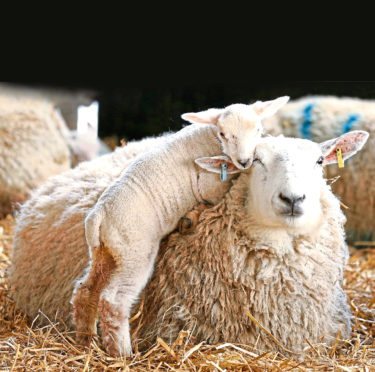Human beings are not the only species being told to socially distance to avoid the spread of a deadly disease.
A new study has shown sheep are more likely to catch maedi visna (MV) – an incurable and ultimately lethal disease – if they are in close proximity to each other indoors.
Researchers at Edinburgh University, the Penicuik-based Moredun Research Institute and GD Animal Health in the Netherlands found that a lack of social distancing between sheep is almost exclusively responsible for the spread of the virus that causes MV.
Common symptoms of MV are chronic respiratory disease and hardening of the udder, although these only tend to become evident some years after infection.
The disease is mostly passed on to other sheep via exhaled droplets from infected sheep, suggesting it is most likely to be passed on to other sheep during periods of housing.
The scientists said no previous research had been carried out to analyse virus transmission under farm conditions, and their study showed much higher rates of spread of the virus during periods of winter housing than between sheep kept at grass.
“The striking result of our research is that MV is a disease of housing,” said Dr Nick Savill from Edinburgh University.
“Even brief periods of housing allow it to spread, but transmission of the virus is negligible between sheep kept at grass.”
His colleague Professor Andrew Illius said: “Although individual sheep never recover from the disease, it could be eliminated from flocks over time by exploiting the fact that transmission of the virus is too slow between grazing sheep to sustain the disease.”
The study also found transmission of MV from ewes to their newborn lambs had only a minor effect on its spread.
Researchers said this was because lambs from infected ewes had a low probability of being infected directly by their mothers, and only a small proportion of ewe lambs need to be retained to maintain flock size.
The study also found MV was unlikely to be spread by newly-infected animals, because the time between an animal being infected and becoming infectious is estimated to be about a year.
Dr Tom McNeilly from the Moredun said the study had helped answer some simple but important questions for farmers about MV control.
He said: “Our results show that transmission occurs almost exclusively during housing and points towards simple and practical methods to reduce transmission within the flock.”
Dr Karianne Lievvaart-Peterson from GD Animal Health added: “Unravelling what the key factors are in the transmission of MV is of utmost importance for control strategies.
“If sheep are prevented from social distancing in cases such as winter housing, transport, penning for selection or treatment purposes, there is an increased risk of spreading MV infection.”
She said future work will aim to identify the most effective ways to test for the virus in order to clear infections from a flock, as well as investigating cheap and practical methods to control the disease.
These include keeping ewes of different age groups in separate pens when housed.
The study was published in the journal PLOS ONE.










